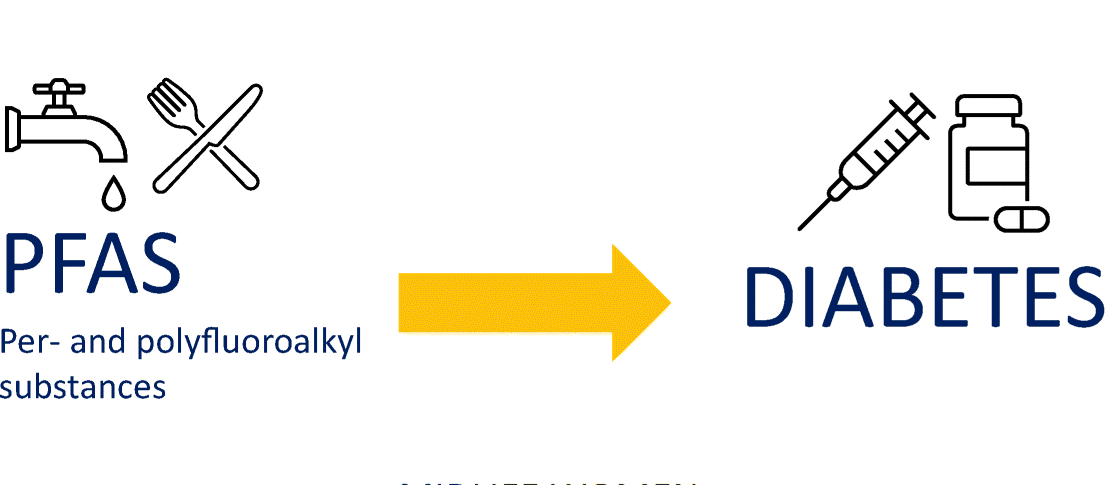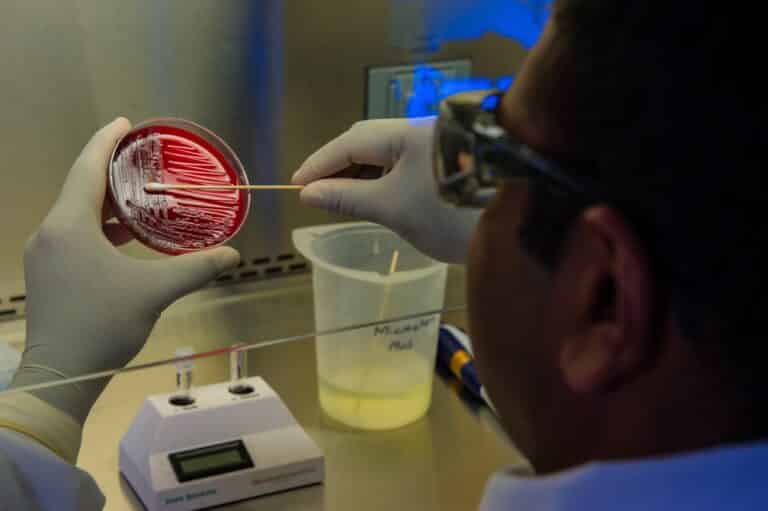PFAS Exposure and Diabetes – Exploring the Risk in High-Exposure Communities
Have you ever wondered about the invisible threats lingering in your surroundings? Picture a world where everyday items pose hidden risks to your well-being. Here, the connection between PFAS exposure and the diabetes surge becomes a cause for concern. As you navigate your daily life, this chemical found in commonplace items might quietly contribute to a growing health issue.
This article peels back the layers of this unnoticed problem. It focuses on the intricate link between its exposure and the rising tide of diabetes in high-exposure communities.
Understanding PFAS Contamination
Per- and polyfluoroalkyl substances (PFAS) are human-made chemicals widely utilized for their water- and grease-resistant properties. Unfortunately, the pervasive use of PFAS in various industrial and commercial applications has led to widespread contamination of air, water, and soil.
PFAS contamination commonly occurs near military bases, firefighting training facilities, and industrial sites where Aqueous Film-Forming Foam (AFFF) has been extensively used. AFFF, a firefighting foam containing PFAS, has significantly contributed to environmental contamination, especially in areas frequented by Army and Navy personnel.
The longevity and persistence of PFAS in the environment raise concerns about prolonged exposure and its potential health impacts. As communities face the consequences of PFAS contamination, exploring its association with diabetes becomes increasingly crucial.
The Diabetes Epidemic
The rise of diabetes, once confined to medical journals, is now a palpable reality in communities grappling with the consequences of the modern lifestyle. The factors contributing to this epidemic are multifaceted, from dietary shifts to sedentary habits. What’s alarming is the potential interplay between this health crisis and the lurking presence of PFAS in the environment.
Diabetes isn’t just a condition; it’s a societal challenge. High-exposure communities face a double-edged sword, dealing with the repercussions of both diabetes and contamination. The connection between environmental factors and health outcomes is a growing concern. It urges people to connect the dots between seemingly unrelated phenomena.
The PFAS-Diabetes Connection
PFAS contamination is a well-documented environmental concern. Its association with the rising tide of diabetes introduces a new layer of complexity to the narrative.
According to Clinical Trials Arena, studies have started to find a correlation. One of the latest study strands in this field examines the connection between chemicals and a higher risk of diabetes. Park and colleagues have looked at the connection between PFAS and diabetes in women in their contribution to Diabetologia.
The results of the study showed an elevated risk of the disease. It indicated that PFAS could be a significant diabetes contributor to watch over the following ten years.
Compared to the women who did not acquire diabetes, the 102 women who did had greater blood concentrations of certain forms of it. Precisely, individuals in the high group who were subjected to seven PFAS chemicals had a 2.62 times higher risk of developing diabetes. These were in comparison to those in the lowest-risk group.
Also, the chemical fingerprints found in water sources and everyday products may leave an indelible mark on your health. Researchers are peeling back the layers to understand how these synthetic substances might influence your susceptibility to the disease.
High-Exposure Communities
Due to elevated exposure levels to PFAS and its potential link to diabetes, specific communities bear a heightened risk. These high-exposure communities often grapple with the consequences of contaminated water sources, industrial discharges, or proximity to facilities involved in PFAS production.
Among those significantly impacted by PFAS exposure are Army and Navy Veterans. The nature of their service often places them in areas where Aqueous Film-Forming Foam (AFFF), a common source of PFAS, has been extensively used.
AFFF, employed in firefighting training and emergency response exercises, has been a prominent contributor to PFAS contamination. As a result, veterans may find themselves at an increased risk of PFAS exposure, further raising concerns about potential connections to diabetes.
In light of the potential health risks associated with PFAS exposure, particularly concerning diabetes, affected individuals, including Navy veterans, are pursuing legal avenues. The AFFF lawsuit by Navy personnel is a part of the broader legal actions seeking accountability and compensation for those adversely affected by PFAS contamination.
As the legal landscape evolves, these lawsuits play a crucial role in addressing the concerns of high-exposure communities. They advocate for the rights of individuals facing health challenges linked to PFAS exposure.
Apart from military veterans, other vulnerable communities facing heightened PFAS exposure include:
- residents living near industrial sites,
- firefighters are regularly exposed to AFFF, and
- individuals residing close to PFAS manufacturing facilities.
These groups often experience prolonged exposure, leading to increased concerns about the potential health impacts, including diabetes.
Health Implications and Consequences
The potential health implications of PFAS exposure cast a shadow over communities facing heightened contamination levels.
The consequences on physical health are unimaginable. The effect of AFFF on cells is a serious additional worry. The National Library of Medicine reported on research using three commonly used AFFFs acquired from firefighting organizations. Applying various dosages to the HEK-293 cells, they discovered an intriguing result.
The evaluated AFFFs were harmful to cells despite their concentrations being ten times lower than those typically used to put out fires. They also resulted in much less cell proliferation. This demonstrated the presence of hazardous chemicals and their impact on cellular toxicity. Therefore, it is of the utmost importance to address these issues urgently.
With diabetes emerging as a significant concern, it needs even more attention to find remediations. The condition, which is already burdening global healthcare, finds an unsettling ally in the form of PFAS. The intricate dance between these environmental factors and health consequences is not fully understood, but the stakes are high.
The implications can be both personal and communal for individuals in these communities. Managing them becomes an additional challenge, adding layers of complexity to healthcare in regions already grappling with environmental issues.
Regulatory Actions and Remediation Efforts
Addressing the looming threat of PFAS exposure and its potential connection to diabetes requires not just awareness but concrete regulatory actions and remediation efforts.
Governments and environmental agencies are pivotal in setting standards and regulations to limit its use and reduce environmental contamination.
For instance, the US Food and Drug Administration is making significant efforts to expand its understanding of the exposure and prevalence of PFAS in food items.
According to Springer Nature, these are prohibited from being added to food. This pertains both directly and indirectly, following the guidelines of the Food Contact Notification and the Code of Federal Regulations. It is a significant step forward in the battle against including or transferring PFAS into food products throughout production.
Also, stricter industrial regulations for monitoring drinking water sources aim to curb the pervasive presence of chemicals in the surroundings.
Remediation efforts, too, are crucial in the battle against the related risks. The ongoing initiatives include cleaning up contaminated sites, implementing advanced water treatment technologies, and exploring innovative ways to break down its compounds.
According to TruLaw, legal actions are underway to address the consequences of PFAS exposure, particularly in cases related to AFFF. It has been found to cause malignancies like colon cancer, breast cancer, kidney cancer, and many more. Now, diabetes has also come into emergence. Therefore, this emphasizes the need for awareness and proactive measures in communities grappling with this silent threat.
Conclusion
Unwinding the intricacies between PFAS exposure and diabetes in high-exposure communities faces complex challenges. It’s not just about chemicals and health conditions; it’s about people navigating a landscape where unseen risks lurk.
As you examine regulatory actions and remediation efforts, the call for collective responsibility echoes loudly. The battle against risks is ongoing, requiring not just awareness but concrete steps from governments, industries, and communities.







